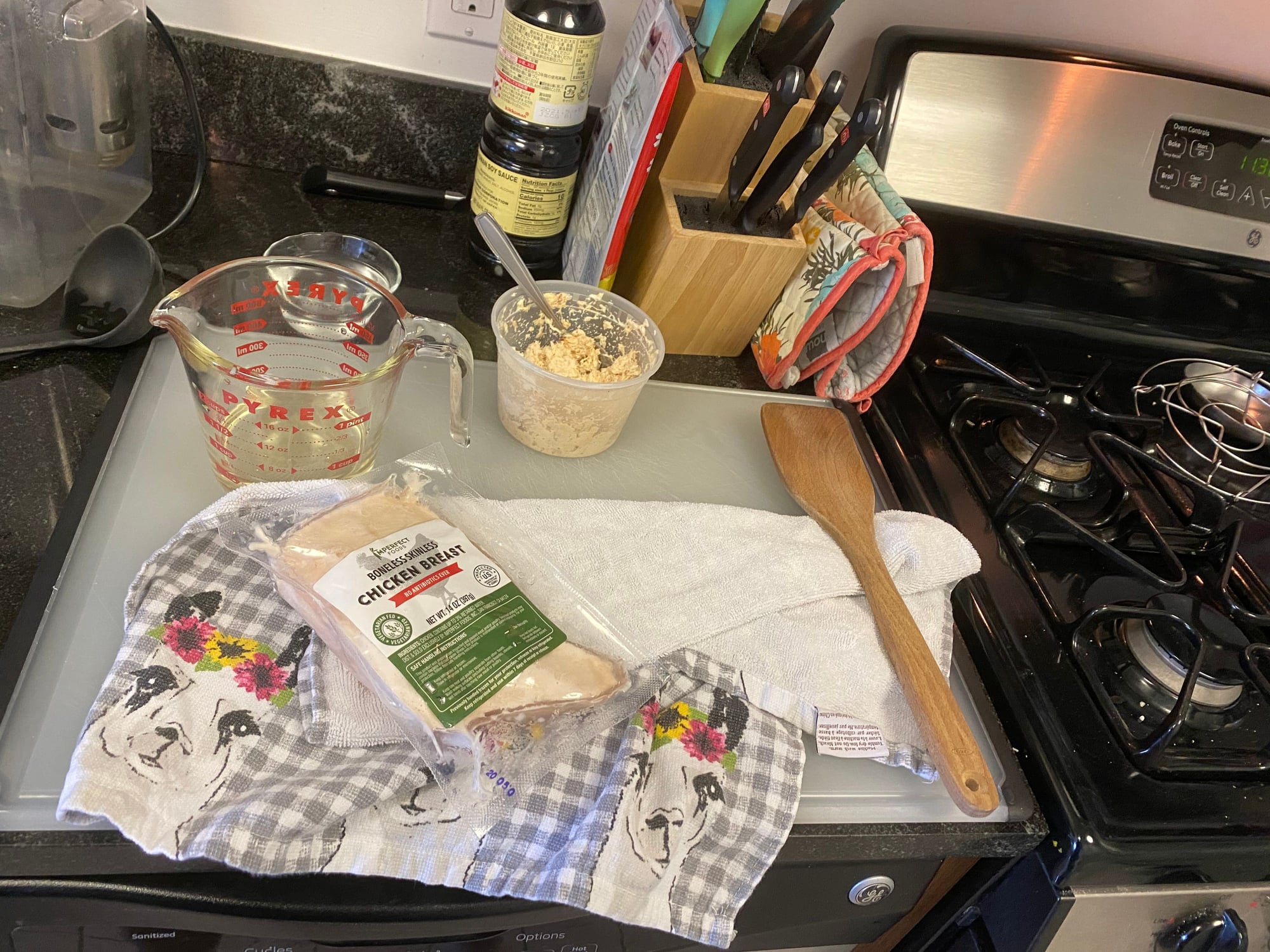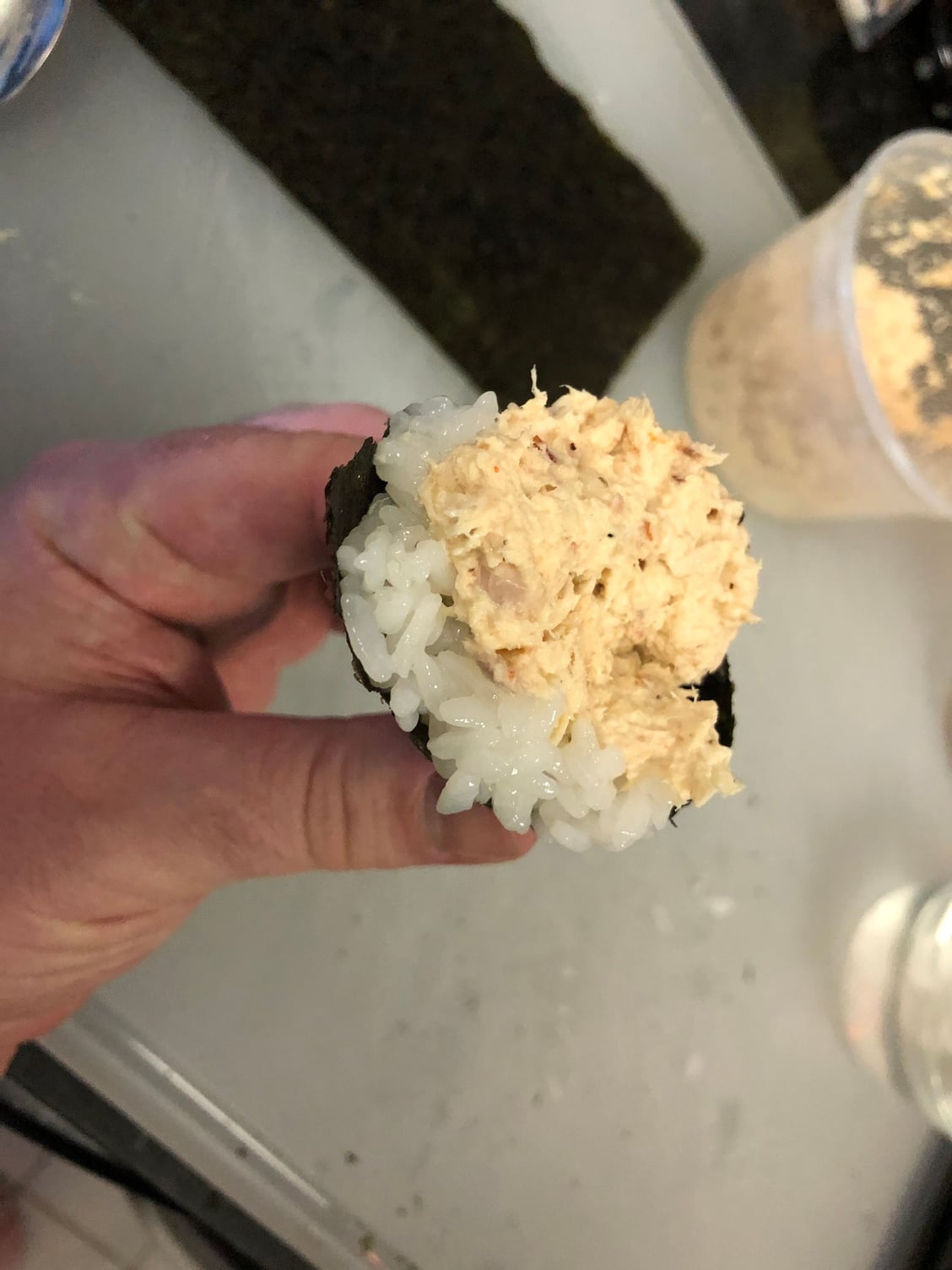Virtual Visit - support thread
#46
FlyerTalk Evangelist
Original Poster
Join Date: Jul 2004
Location: London
Posts: 18,419
Today was supposed to be our departure day.
So instead of a tedious tube journey to Heathrow Airport and a long flight in Economy with a ten year old across my lap for most of it, I’m going to relax in First Class luxury with my choice of films and entertainment.
Today I’m gong to have takikomi gohan with ham.
https://translate.google.co.uk/trans...98&prev=search
Will use ham/gammon pieces, chopped lotus roots, carrots and green beans (used up my mushrooms in last night’s Hayashi rice)
Other ingredients are ginger, sake and dashi concentrate instead of konbu kelp powder*. Recipe doesn’t demand it but I will add a little mirin too.
I would usually substitute gobo/burdock root for Jerusalem Artichokes/Sunchokes, but lotus root/renkon should be fine.
Once done (hoping for a good okoge crust) I’ll stir in spring onions/scallions. Am using a big clay rice cooking pot for this, not an electronic rice cooker.
So instead of a tedious tube journey to Heathrow Airport and a long flight in Economy with a ten year old across my lap for most of it, I’m going to relax in First Class luxury with my choice of films and entertainment.
Today I’m gong to have takikomi gohan with ham.
https://translate.google.co.uk/trans...98&prev=search
Will use ham/gammon pieces, chopped lotus roots, carrots and green beans (used up my mushrooms in last night’s Hayashi rice)
Other ingredients are ginger, sake and dashi concentrate instead of konbu kelp powder*. Recipe doesn’t demand it but I will add a little mirin too.
I would usually substitute gobo/burdock root for Jerusalem Artichokes/Sunchokes, but lotus root/renkon should be fine.
Once done (hoping for a good okoge crust) I’ll stir in spring onions/scallions. Am using a big clay rice cooking pot for this, not an electronic rice cooker.
#47
Join Date: Jul 2014
Location: Cape Cod
Programs: Free agent
Posts: 1,535

Here's my mise en place, the chicken wasn't used sadly. It didn't finish cooking until the rice was already made.

The rice! Properly washed, drained, and cooked. The temperature held really well in the pyrex. I still can't believe how much vinegar is used for just 2 cups of rice.

First attempt

Tuna with kewpie mayo and some chili sauce

Rolled! Came out pretty ok for a first time.

Made a few more and experimented with my rolling technique. One wet hand, one dry hand seemed to work best.
#48
FlyerTalk Evangelist
Original Poster
Join Date: Jul 2004
Location: London
Posts: 18,419
That’s a very generous amount of filling, but looks good. That’s calrose rice, isn’t it? You definitely gave it a good gloss!
I completely forgot to photograph the finished ham takikomi gohan, but it was a big success. I ended up adding a tiny amount of garlic also, but it did taste just like Japanese home cooking. Here it is before the cooking stage (left it to soak for 20 minutes first).

I completely forgot to photograph the finished ham takikomi gohan, but it was a big success. I ended up adding a tiny amount of garlic also, but it did taste just like Japanese home cooking. Here it is before the cooking stage (left it to soak for 20 minutes first).

#49
Join Date: Jul 2014
Location: Cape Cod
Programs: Free agent
Posts: 1,535
That looks delicious.
This is the rice I'm using:
The first few ended up being somewhere between a temaki and a small ice cream cone in shape and they are definitely overstuffed.
I made a few oversized maki rolls with egg and a bacon strip afterwards that was surprisingly well-packed considering I don't have a bamboo sheet to form with and no idea how to do it.
I have a lot of improving to do but it was very fun and the rice was the star of the show.
This is the rice I'm using:
The first few ended up being somewhere between a temaki and a small ice cream cone in shape and they are definitely overstuffed.
I made a few oversized maki rolls with egg and a bacon strip afterwards that was surprisingly well-packed considering I don't have a bamboo sheet to form with and no idea how to do it.
I have a lot of improving to do but it was very fun and the rice was the star of the show.
#50
FlyerTalk Evangelist
Original Poster
Join Date: Jul 2004
Location: London
Posts: 18,419
Nishiki is very similar to calrose, which is just a little longer than what I use, Yumenishiki (like a koshihikari). I’d suggest using just a smidge less water as the longer shape makes it “wetter”.
Used the rest of the ham, a bit of diced frikadellen, cheddar cubes, and the golden toasted part is sliced mochi, for okonomiyaki tonight. Here it is naked:


Used the rest of the ham, a bit of diced frikadellen, cheddar cubes, and the golden toasted part is sliced mochi, for okonomiyaki tonight. Here it is naked:


Last edited by LapLap; Apr 3, 2020 at 2:37 am
#52
FlyerTalk Evangelist
Original Poster
Join Date: Jul 2004
Location: London
Posts: 18,419
Because I have a child who’s not too keen on chilli, I didn’t add kimchi this time, but Korean pancakes are a world unto themselves - so much to explore. Great thing about okonomiyaki is the sheer quantity of cabbage (and leeks/scallion) you can get through with a single serving and yet it still tastes like junk food!
#53
Join Date: Oct 2001
Location: Germany
Posts: 3,827
What's the trick making the perfect rice for temaki?
My rice usually gets either not sticky enough, or too wet (so that nori gets wet too quickly - and I like it crispy). I am just using "sushi rice" from the local supermarket. Do I need to learn a lot about different kinds of rice, or is it just a matter of a proper cooking regime?
My rice usually gets either not sticky enough, or too wet (so that nori gets wet too quickly - and I like it crispy). I am just using "sushi rice" from the local supermarket. Do I need to learn a lot about different kinds of rice, or is it just a matter of a proper cooking regime?
#54
Join Date: Oct 2003
Posts: 2,305
I should have guessed LapLap can identify rice varieties based on pics. Now I know who to send my "traditionally cooked rice" onsen ryokan meal pictures to. I think I've even been served a few bowls of wood fire cooked rice.
cockpitvisit I'll leave the sushi rice tips up to those who cook more regularly. I usually refer to Maki at Just Hungry who explains Japanese cooking in detail https://www.justhungry.com/handbook/...-japanese-rice https://www.justhungry.com/handbook/...-chirashizushi
Sakura + Snow from last weekend :
cockpitvisit I'll leave the sushi rice tips up to those who cook more regularly. I usually refer to Maki at Just Hungry who explains Japanese cooking in detail https://www.justhungry.com/handbook/...-japanese-rice https://www.justhungry.com/handbook/...-chirashizushi
Sakura + Snow from last weekend :
Last edited by freecia; Apr 2, 2020 at 10:16 pm Reason: link embeds are going to drive me nuts
#55
FlyerTalk Evangelist
Original Poster
Join Date: Jul 2004
Location: London
Posts: 18,419
What's the trick making the perfect rice for temaki?
My rice usually gets either not sticky enough, or too wet (so that nori gets wet too quickly - and I like it crispy). I am just using "sushi rice" from the local supermarket. Do I need to learn a lot about different kinds of rice, or is it just a matter of a proper cooking regime?
My rice usually gets either not sticky enough, or too wet (so that nori gets wet too quickly - and I like it crispy). I am just using "sushi rice" from the local supermarket. Do I need to learn a lot about different kinds of rice, or is it just a matter of a proper cooking regime?
I present my tried and tested rice cooking method - works with “sushi” rice types, Spanish (non “bomba” rice, particularly the kinds from Calasparra) and Korean rice.
1. Rinsing.
Rinse rice. This in itself is contentious as there are folks who insist it isn’t necessary (and it isn’t a process that forms part of making Spanish arroz/rice dishes), but rinsing DOES remove heavy metals - significantly so - from rice, making it safer, and particularly so for children. It also helps with the absorption task (more on this in a moment).
Everyone rinses differently, I’d suggest a gentle hand. As soon as rice gets wet it becomes progressively more brittle and easier to damage. So a quick rinse, a bit of grinding (I count to 30) and then rinse by changing the water a few times until the water becomes clearish (doesn’t have to become crystal clear).
Things to watch out for - work fast! If you grind rice slowly, the water it is sitting in will become re-absorbed into the rice. So try not to let this stage take more than a minute. If your rice is a bit old, leftover rice bran oil in the residue (which goes a little rancid and has an unwelcome aroma) will get sucked into the rice as well as those heavy metal residues. So grind quickly and rinse immediately, don’t become distracted by a phone call at this point! The next couple of rinses can be more leisurely.
Grinding - some people grind rice with the heel of their hand against the bowl/sieve. That’s fine if you work quickly and have a round short sturdy grain, otherwise I’d suggest rubbing rice gently between two hands - particularly with the US calrose types (such as Nishiki) as the longer shape makes it less robust.
2. Draining
Once rinsed, leave the rice to drain, ideally in a sieve, for at least ten minutes - 20 is perhaps optimum.
Why? The initial rinsing, draining and soaking stages serve an important function. If you add dry rice to water it cooks from the outside in. As water penetrates the rice, the outside is cooking faster than the inner core. Rice has a greater tendency to crack or remain undercooked (that “chalky” texture failed rice might have). The rinsing and soaking stage encourages water to penetrate right into the centre of the grain so that when it cooks it does so evenly; inside out as well as outside in.
The pro tip (which I don’t do) is to rinse the rice the night before and soak it in very cold water overnight in the fridge.
If you look CLOSELY at my ham takikomi gohan you may see horizontal lines forming across many of the grains of rice - this shows that water is being absorbed unevenly.

The night before rinse and overnight cold soak slows down the water absorbing process and avoids this - but my fridge is tiny and I’m not picky enough to require this attention to detail.
But it is worth knowing and you may value the improved quality.
As the rice drains you will notice how it changes colour/opacity as the water is absorbed. The goal is for it to change from translucent to a solid white - ideally without too many lines and “cracks” as it makes this transition, but no need to get too precious.
Tip - don’t wash rice in an electronic cooker pan as the bran residues (as well as friction from the rice) will erode the non-stick coating and give it a shorter life span. This is also why I make things like takikomi gohan and brown rice in a separate pot - our Zojirushi inner pan is like new after 8 years of near daily use for this reason; white rice only and never used for rinsing.
3. Soaking
For every measure of rice used, you will need 1.15 or 1.1 of water (the takikomi gohan had 1.0 because the vegetables introduced moisture).
Soak the rice in the water/liquid you are to cook it in. Let it sit for at least 20 minutes. Rice will be solid white when it’s ready. For convenience, soak rice in the cooking pot.
Unless you have a super-duper rice cooker which will allow you to cut corners, I can’t stress enough how important it is to let rice drain and soak before cooking. The minimum you need is 10 minutes draining and 15 minute soaking, but I’d suggest 20 + 20 minutes.
4. Cooking
You’ll need a pot with a lid. If the lid has a hole in it, or a gap for a pourer, stuff them with something heat resistant. The point is to keep the steam inside.
First step is to crank up the heat - let it rip! You want the water inside the core of the rice to get to temperature as the outside does. Use your ears and eyes and listen and look for signs that the water has reached a boil. Once it does, turn down the heat to a gentle low (my advice is to change from a larger cooking burner to a smaller one) and let it simmer gently for 10-11 minutes. Do NOT take off the lid.
5. Resting.
After 10-11 minutes, take the pan off the heat and let it sit for a further ten minutes. You can (do it quickly) put a tea towel over the rice at this point to stop water from the lid dripping back on the cooked rice, but it’s not necessary. Just let it “rest” in the residual steam for another ten minutes. This is a vital part of the cooking process, don’t skip it!
And that’s it - done!
Trouble shooting
Rice browned/stuck to bottom? Lower the simmering heat a little next time. If rice making is to become a habit you might want to put a small sticker/bit of masking tape by your cooker dial to remind you of the optimum point (or where it was when it didn’t work).
Too wet/dry? Take very careful note of how much water you added and adjust for next time. Different bags of rice (even of the same kind) can have different requirements, depends on variety and if it is older or newer.
Making sushi rice? If adding seasoned vinegar, consider using just a little less water for cooking than usual as the rice needs to absorb the vinegar as well.
I know this is long, but it is a simple process. I find that understanding why things are done makes it easier to remember to do them.
Last edited by LapLap; Apr 3, 2020 at 2:57 am
#56
FlyerTalk Evangelist
Original Poster
Join Date: Jul 2004
Location: London
Posts: 18,419
Saying that, the one we get through the most is Haruka from Italy as it has the best cost performance ratio, we usually get it in 10kg bags at half the price of our favoured Yumenishiki, but I can’t tell what variety it is, just that it doesn’t elongate like the American sushi rices do.
#57
Join Date: Jul 2014
Location: Cape Cod
Programs: Free agent
Posts: 1,535
Drool....! The dilemma for this must be whether to go for okonomiyaki sauce or a Korean vinegar dipping accompaniament.
Because I have a child who’s not too keen on chilli, I didn’t add kimchi this time, but Korean pancakes are a world unto themselves - so much to explore. Great thing about okonomiyaki is the sheer quantity of cabbage (and leeks/scallion) you can get through with a single serving and yet it still tastes like junk food!
Because I have a child who’s not too keen on chilli, I didn’t add kimchi this time, but Korean pancakes are a world unto themselves - so much to explore. Great thing about okonomiyaki is the sheer quantity of cabbage (and leeks/scallion) you can get through with a single serving and yet it still tastes like junk food!
As for rice, LapLap has given you the way that will yield the best possible result. I don't soak and I use an instant pot. Those are to save time and thus my rice isn't the best it could be.
We received our family meal delivery from my favorite Korean restaurant last night. 4 mains, 4 bibimbap kits, and a bunch of banchan. I am going to take a day or so off from cooking because I just realized I've made 18 meals in a row. This week's looks pretty interesting. A beef seaweed stew and dak dori tang are lunch and dinner respectively. We seem to be eating too well for there to be a crisis going on in our city. It's very surreal.
#58
Join Date: Feb 2013
Location: Beantown! (BOS)
Programs: AA PtPro (2 MM); Hilton Diamond; Hertz President Cr; DL SkyMiles; UA MileagePlus
Posts: 3,441
Japanese Curry
I was not planning to post this, because I am not a cook. But now stuck at home, nothing to do, and start pretending to be a cook.... Decided to make Japanese curry, but not from scratch, obviously. initial thought was this does not belong to this thread because I am not doing "real cooking", but...
Obviously, I used pre-packaged, pre-made store bought curry rue or curry block. Told you I am not a cook!
Told you I am not a cook!

Ingredients are: beef, potato, carrot, and onion.
What I do is that I want onion to remain crunchy and potato to remain in shape rather than all mashed up.
First saute beef in a pot. Optional salt, pepper, ground cumin seed, ground nutmeg, and powdered turmeric as saute beef. Can also use curry powder instead.

Add water to the pot, simmer the content to tender the meat. For beef I usually simmer for 1 - 1.5 hrs. Optional to add bay leaf (laurel) during summering.
Adjust the water in the pot to the appropriate amount as indicated on the package of curry rue. Add carrots and simmer another 20-30 min. to cook carrots.
Same time on separate pan saute cut onions. Again, option to flavor onions, saute till desire consistency (for me I like onions to remain little crunchy).
Turn off heat on the pot, add curry rue or curry block. Stir till curry block dissolve completely.
Then add sauted onions an uncooked cut potatoes.
Simmer for another 10 min, or so till potatoes are cooked.
Curry is done.

As for rice, yes key ingredient of Japanese curry!, I am not try to make Japanese rice in a pot. I was told to learn to cook Japanese rice in a pot is one of difficult task in Japanese cooking. I simply use rice cooker, reliable. Told you I am not a cook.

On a plate my style is place curry and rice side by side, not curry over rice. Another key ingredient, fukujinzuke (福神漬け), I think it is another key ingredient for Japanese curry.

As far as I am concerned, it is as good as CoCo Ichibanya.

Obviously, I used pre-packaged, pre-made store bought curry rue or curry block.
 Told you I am not a cook!
Told you I am not a cook!
Ingredients are: beef, potato, carrot, and onion.
What I do is that I want onion to remain crunchy and potato to remain in shape rather than all mashed up.
First saute beef in a pot. Optional salt, pepper, ground cumin seed, ground nutmeg, and powdered turmeric as saute beef. Can also use curry powder instead.


Add water to the pot, simmer the content to tender the meat. For beef I usually simmer for 1 - 1.5 hrs. Optional to add bay leaf (laurel) during summering.
Adjust the water in the pot to the appropriate amount as indicated on the package of curry rue. Add carrots and simmer another 20-30 min. to cook carrots.
Same time on separate pan saute cut onions. Again, option to flavor onions, saute till desire consistency (for me I like onions to remain little crunchy).
Turn off heat on the pot, add curry rue or curry block. Stir till curry block dissolve completely.
Then add sauted onions an uncooked cut potatoes.
Simmer for another 10 min, or so till potatoes are cooked.
Curry is done.

As for rice, yes key ingredient of Japanese curry!, I am not try to make Japanese rice in a pot. I was told to learn to cook Japanese rice in a pot is one of difficult task in Japanese cooking. I simply use rice cooker, reliable. Told you I am not a cook.


On a plate my style is place curry and rice side by side, not curry over rice. Another key ingredient, fukujinzuke (福神漬け), I think it is another key ingredient for Japanese curry.


As far as I am concerned, it is as good as CoCo Ichibanya.


#60
Join Date: Oct 2001
Location: Germany
Posts: 3,827
At the risk of being banned on FT - is a pressure cooker an option for making rice, or is it an absolute no-no?





















